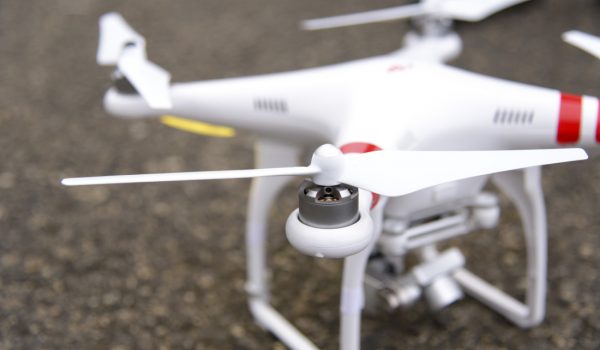On February 13, the Federal Aviation Administration (FAA) issued a notice of proposed rulemaking that would allow commercial drone users to fly over people and at night.
The FAA regulates the commercial use of small unmanned aircraft systems (small UAS), i.e., drones weighing less than 55 pounds. The regulations, known as Part 107 (which can be found at 14 C.F.R. 107.01 et seq), contain four key operational restrictions.
- Small UAS cannot fly higher than 400 feet above ground level or higher than 400 feet off of a structure.
- Operators cannot fly small UAS “beyond visual line of sight,” which means the drone operator must be able to see the drone – unaided by technology such as binoculars – at all times between takeoff and landing.
- Small UAS may only fly above people who either (a) directly participate in the drone’s operation, (b) are located under a covered structure, or (c) are inside a stationary vehicle.
- All small UAS must fly during the daytime, which the FAA defines as 30 minutes before official sunrise to 30 minutes after official sunset.
Those operational restrictions, however, may soon be scaled back. The FAA is proposing new rules that would allow commercial drone operations over people and at night, and this relaxation of the rules could significantly expand the number of companies using drones as part of their business. The FAA is accepting comment on the proposed rules until April 15, 2019. You can find the text of the proposed rules here and submit comments here. Below is a summary of the proposed changes.
Operations Over People
Under the proposed rules, the FAA will allow drone operations over people under three specific categories, all based on the potential risk of injury to people below.
Category 1
Under a Category 1 operation (the lowest risk of injury), operators can fly extremely small UAS – those weighing approximately half a pound (0.55 lbs.) or less (including cargo or payload) – over people without any restrictions.
Category 2
Under a Category 2 operation, drone operators can fly drones weighing more than 0.55 pounds if the drone meets certain design standards aimed at reducing the risk of injury to people below. Specifically, manufacturers must design Category 2 drones so that the force of any potential impact on a person would be less than 11 foot-pounds. Category 2 drones also cannot have exposed rotating parts that would cut a person upon impact. Beyond these design standards, the Category 2 rules would not impose any new operational restrictions. In other words, as long as operators obtain a drone from a manufacturer who has demonstrated to the FAA that its drones are Category 2-compliant and likewise comply with the other rules of Part 107, the operator is free to fly these drones over people.
Category 3
Like Category 2, Category 3 would include design standards for drone manufacturers, yet allow for more risk than a Category 2-compliant drone. Specifically, the impact force threshold is raised to 25 foot-pounds. To allow for greater potential impact risk, however, Category 3 drone users must comply with additional operational restrictions. First, unlike Category 1 and 2 operations, no Category 3 operations can take place over an open-air assembly of people. Second, in most cases, Category 3 operations must take place within a closed- or restricted-access site. Third, to the extent a Category 3 operation occurs outside of a closed- or restricted-access site, the drone can transit but not hover over people.
Night Operations
Under the proposed rules, the FAA would allow routine nighttime drone operations on two conditions. First, operators must complete knowledge testing or training related to nighttime operations. Second, the drone must have anti-collision lights visible for three miles.
What About Privacy?
Provided the FAA is proposing to let commercial drone operators fly over people and at night, it is important to note that these new rules do not include privacy protections. When first issuing Part 107, however, the FAA released a fact sheet concerning the role of state and local jurisdictions in regulating drones. The fact sheet pointed to privacy as a sphere in which state and local governments can legislate with respect to drones. In other words, drone operations that comply with Part 107 may still violate the privacy of people below based on jurisdiction-specific requirements. Drone operators should, therefore, be aware of state and local privacy laws before flying.
Conclusion
The proposed rules will be an important step forward for companies using drones in their business. The current rule prohibiting overhead flight is a significant deterrent to adopting drones as a business strategy because it forces businesses to either conduct operations of limited and unproductive scope or apply for a waiver from the FAA.

